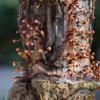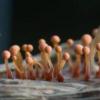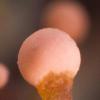
09-01-2026 10:08
 Blasco Rafael
Blasco Rafael
Hola, en el mismo habitat que la anteriorRetamaDia

08-01-2026 21:22
 Blasco Rafael
Blasco Rafael
Hola, He recogido esta muestra de Orbilia sobre Re

07-01-2026 10:24
 Danny Newman
Danny Newman
Pezicula sp. on indet. hardwood Appalachian Highl

07-01-2026 22:22
 Danny Newman
Danny Newman
Tatraea sp. on indet. hardwood The Swag, Great Sm

07-01-2026 17:29
 Marc Detollenaere
Marc Detollenaere
Dear Forum,On a barkless Populus I found some smal

10-11-2021 17:33
 Riet van Oosten
Riet van Oosten
Add-on topic http://www.ascofrance.com/forum/7059

07-01-2026 10:05
 Danny Newman
Danny Newman
cf. Chaetospermum on XylariaCosby Campground, Grea

02-01-2026 17:43
MARICEL PATINOHi there, although I couldn't see the fruitbody, I

04-01-2026 17:45
 Stephen Martin Mifsud
Stephen Martin Mifsud
I was happy to find these orange asmocyetes which
 Hello Ascofrance!
Hello Ascofrance!I have come across two potential names for this fungus, collected in Andean cloud forest between 2500 and 2950 m.a.s.l. outside of Medellin, Colombia. It has also been observed in Costa Rica at ~600 m.a.s.l., and at least one other locale that I am aware of. It is seen here on some dead, herbacious stem. A very, very similar fungus is tentatively named Chardonia rosea in a color figure on page 143 of Meike Piepenbring's Introduction to Mycology in the Tropics, while this pdf from Funga Veracruzana:
http://fungavera.com/fungavera/funga%20pdf/121-TUBERCULATE.pdf
calls it Tubercularia lateritia. I am here to find out if this fungus should be called either or neither of these names. Sadly, there is no microscopy, so I understand if no advice can be offered. Perhaps the species is sufficiently recognizable to the naked eye to be identified, if only to genus.
Final note: this post is mirrored at Mushroom Observer at the following link:
http://mushroomobserver.org/189147
Many thanks in advance for your contributions.
-Danny

your fungus could be Nectria pseudotrichia asexual state = Tubercularia lateritia.
It is the most common species in subtropical and tropical regions.
Regards,
Christian




